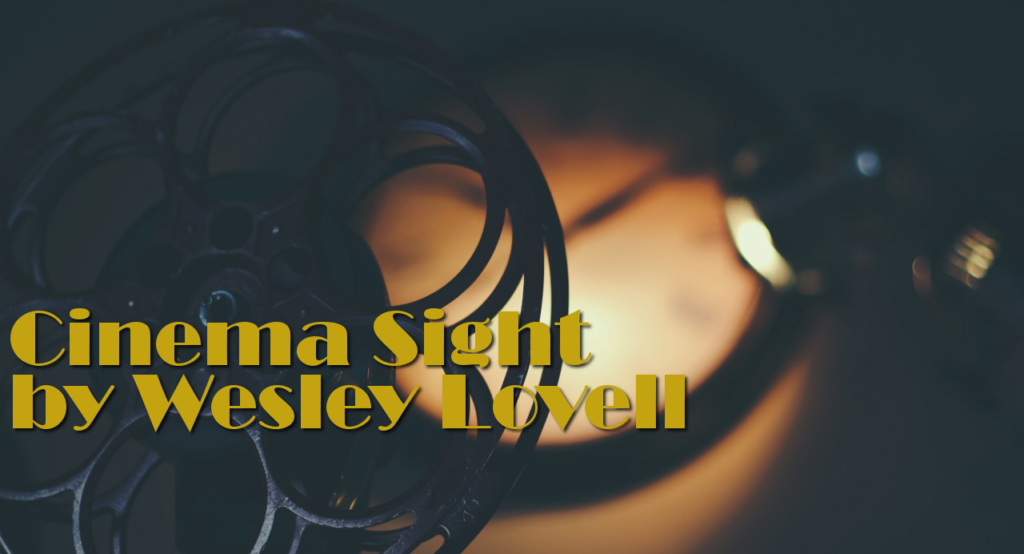 For the For the Love of Film Blogathon this week, we finish off today with Peter’s look at Hitchcock’s use of actors and his ability to compel many of them to against-type performances with great success.
For the For the Love of Film Blogathon this week, we finish off today with Peter’s look at Hitchcock’s use of actors and his ability to compel many of them to against-type performances with great success.
Alfred Hitchcock in his own words:
“There is a dreadful story that I hate actors. Imagine anyone hating James Stewart. I can’t imagine how such a rumor began. Of course it may possibly be because I was once quoted as saying that actors are cattle. My actor friends know I would never be capable of such a thoughtless, rude and unfeeling remark, that I would never call them cattle . . . What I probably said was that actors should be treated like cattle.”
He is also quoting as having said:
“When an actor comes to me and wants to discuss his character, I say, “It’s in the script”/ If he says, “But what’s my motivation?”, I say, “Your salary”.”
That’s what Hitchcock had to say about actors, but what does his use of actors in his films say about him? Was he merely being perverse, or did he see something in them that no one else had seen before? Why are so many of them cast against type, and in so being cast, give some of their best, most indelible performances? It wasn’t a fluke. It began with Hitchcock’s first suspense thriller.
 Singer-composer matinee idol Ivor Novello displayed a hitherto unsuspected gift for the macabre in playing the title role in Hitchcock’s legendary 1927 film The Lodger in which he may or may not be a character based on Jack the Ripper.
Singer-composer matinee idol Ivor Novello displayed a hitherto unsuspected gift for the macabre in playing the title role in Hitchcock’s legendary 1927 film The Lodger in which he may or may not be a character based on Jack the Ripper.
 Robert Donat, fresh from his portrayal of The Count of Monte Cristo was given the role of Hitchcock’s quintessential frightened, but resourceful man on the run in his most acclaimed British period film, 1935’s The 39 Steps.
Robert Donat, fresh from his portrayal of The Count of Monte Cristo was given the role of Hitchcock’s quintessential frightened, but resourceful man on the run in his most acclaimed British period film, 1935’s The 39 Steps.
Dame May Whitty, fresh from her Oscar nominated role as the fussy, talkative elderly hypochondriac in Night Must Fall was given the role of Hitchcock’s quietly resourceful British spy in 1938’s The Lady Vanishes, for which he won the Best Director award of the New York Film Critics.
Robert Walker, almost always cast as the boy next door, played completely against type as Hitchcock’s killer-conspirator in Hitchcock’s 1951 thriller, Strangers on a Train, his next to last film.
Anthony Perkins had a nice career playing nice young men until Hitchcock turned him into a psychopathic killer in 1960’s Psycho, but unlike the other actors who underwent transformations in Hitchock’s film, Perkins was unable to go back to comfortably playing nice guys and spent the bulk of the remainder of his career trying to get away from his Psycho image only to finally surrender and star in two profitable sequels in the 1980s, the last of which he directed himself.
The transformation in Hitchcock’s films was most noticeable, however, in megastars Cary Grant, Ingrid Bergman and James Stewart.
 Grant starts out in his first film for Hitchcock, 1941’s Suspicion, as his usual suave self but it doesn’t take long for his impressionable young wife, Joan Fontaine, as well as the audience, to suspect there’s something wrong with Johnnie, Grant’s character. Is he a murderer or isn’t he? All the evidence seems to suggest that he is, but a studio imposed happy ending says differently. Do we believe the ending or do we believe our initial feelings about his character?
Grant starts out in his first film for Hitchcock, 1941’s Suspicion, as his usual suave self but it doesn’t take long for his impressionable young wife, Joan Fontaine, as well as the audience, to suspect there’s something wrong with Johnnie, Grant’s character. Is he a murderer or isn’t he? All the evidence seems to suggest that he is, but a studio imposed happy ending says differently. Do we believe the ending or do we believe our initial feelings about his character?
There was nothing quite as sinister in Grant’s makeup as an undercover agent in Hitchcock’s 1946 classic, Notorious. He wasn’t a killer, but he was something of a heel, if not an out-and-out louse, as he allows Ingrid Bergman to get deeper and deeper into trouble with Nazi spies, one of whom she marries to obtain useful information on the activities of husband Claude Rains’ clandestine friends.
The film also presented a complete change of character for Hollywood’s then seemingly virtuous Ingrid Bergman. Although she had played the prostitute Ivy in the 1941 version of Dr. Jekyll and Mr. Hyde, no one believed she was really a hooker. This time, however, she was very believable as the daughter of a convicted Nazi spy who is recruited by the U.S. government to use her connection to get the goods on the South American group he was connected with.
Although Grant’s character is obviously in love with her, he doesn’t let his true feelings come through until she is near death, the result of slowly being poisoned by Rains and his serpentine mother, Leopoldine Konstantin, who have discovered her true convictions.
Grant’s later Hitchcock films, 1955’s To Catch a Thief and 1959’s North by Northwest were more in line with his standard screen persona.
 What Hitchcock did with Grant’s image was nothing compared to what he did with James Stewart’s. Hitchcock first used Stewart in 1948’s Rope in which he plays the mentor and inadvertent inspiration of John Dall and Farley Granger for their cold-blooded Leopold/Loeb style murder of a fellow classmate. It was Stewart’s first anti-hero role.
What Hitchcock did with Grant’s image was nothing compared to what he did with James Stewart’s. Hitchcock first used Stewart in 1948’s Rope in which he plays the mentor and inadvertent inspiration of John Dall and Farley Granger for their cold-blooded Leopold/Loeb style murder of a fellow classmate. It was Stewart’s first anti-hero role.
Told in real time in single take, the film is most noted for its technique, but was regarded as one of Hitchcock’s lesser films until the home video revolution of the 1980s introduced it to more appreciative audiences.
Stewart’s second role for Hitchcock was even more unconventional as he played a wheelchair-bound voyeur in one of Hitchcock’s most celebrated films, 1954’s Rear Window. He was more conventional in his third, the 1956 remake of Hitchcock’s 1935 film, The Man Who Knew Too Much opposite Doris Day at her whole best.
 Playing a retired San Francisco detective afraid of heights, Stewart really played against type as the dupe set up to be unable to stop the murder of a woman who is pushed to her death from the bell tower of a Spanish Mission in 1958’s Vertigo, one of Hitchcock’s most unsettling films. Kim Novak, in a dual role, is the actress who was the recipient of Hitchcock’s sharp retort when she asked what her character’s motivation was.
Playing a retired San Francisco detective afraid of heights, Stewart really played against type as the dupe set up to be unable to stop the murder of a woman who is pushed to her death from the bell tower of a Spanish Mission in 1958’s Vertigo, one of Hitchcock’s most unsettling films. Kim Novak, in a dual role, is the actress who was the recipient of Hitchcock’s sharp retort when she asked what her character’s motivation was.
Hitchcock attempted to cast retired screen legend Grace Kelly, then Princess Grace of Monaco, against type as the nymphomaniac heroine of his 1964 film, Marnie but she turned him down. The part went to Tippi Hedron who had starred in Hitchcock’s film of the preceding year, The Birds.
One wonders what kinds of treats Hitchcock would give us today and which of today’s crop of actors he would choose to cast against type, perhaps changing their images and the fortunes as he so expertly did with Novello, Donat, Perkins, Grant, Stewart and others.


















Leave a Reply
You must be logged in to post a comment.